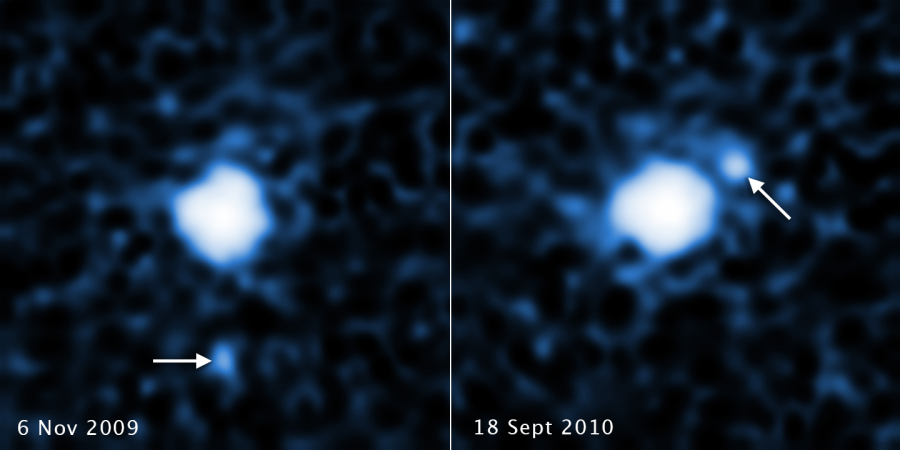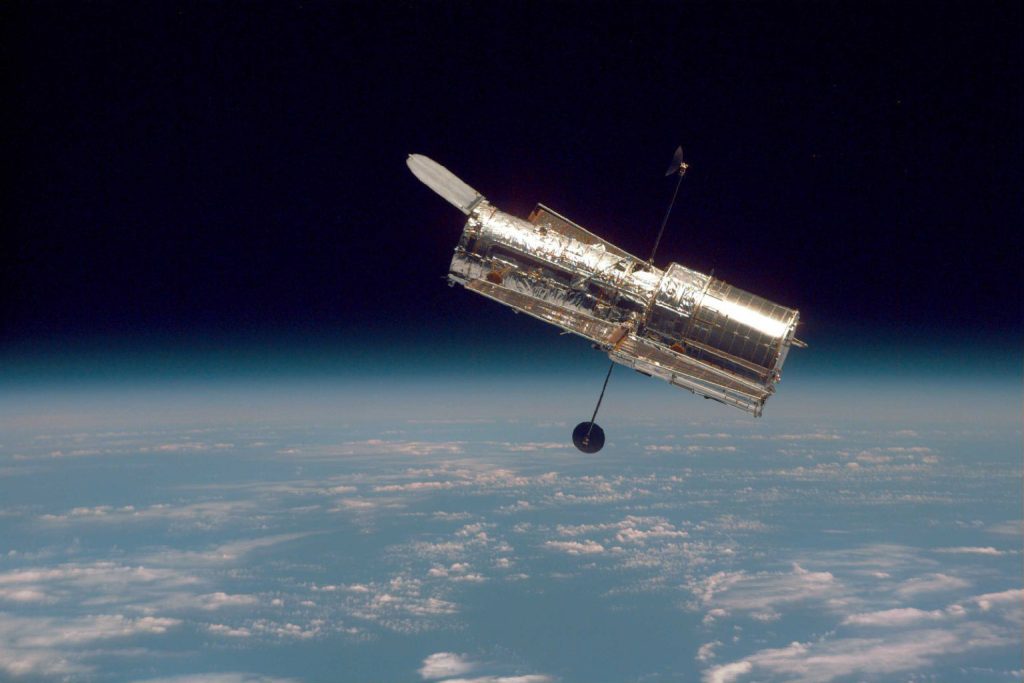NASA’ Hubble Space Telescope found a new moon in our solar system. It orbits around the third largest dwarf planet of the system, which is known as 2007 OR10 or “Snow White”.
Astronomers have used three different space observatories to validate that this dwarf planet has actually a moon. This discovery helps researchers to know how moons are formed.

“The discovery of satellites around all of the known large dwarf planets – except for Sedna – means that at the time these bodies formed billions of years ago, collisions must have been more frequent, and that’s a constraint on the formation models,” said Csaba Kiss of the Konkoly Observatory in Budapest, Hungary. “If there were frequent collisions, then it was quite easy to form these satellites,” Kiss added.
The dwarf planet is located beyond Neptune
The Hubble Space Telescope was launched into low earth orbit in 1990. Along the years it has discovered several celestial bodies in the solar system and outside of it too. This time, it showed the moon that orbits the 2007 OR10 planet, which is one of the dwarf planets of the solar system. This planet is located in the Kuiper Belt, a freezing area on the outskirts of our solar system that was created about 4.6 million years ago. The Kuiper Belt is beyond Neptune, near where Pluto and other frozen celestial bodies live.
Snow White, as it is also called, is the third largest dwarf planet. It is 1,530 kilometer-wide (950 mile). Its newly discovered moon is about 240-400 kilometers in diameter. Scientists were alerted by the observations made by the agency’s Kepler Telescope.

According to NASA, there are 9 dwarf planets and Snow White is one of them. Dwarf planets are like really small planets; however, they cannot be considered like that because they don’t have all the needed technical criteria to be classified as small planets.
‘Snow White’ didn’t have a moon before
According to previous images and research, 2007 OR10, didn’t have a Moon before. Scientists believe this moon was created since the objects in that area slammed into each other more often because it is crowded by smaller bodies.
Scientists also think that the density of these bodies could be moderate. The speed of collision is also an important factor to consider since it has to be precise in order to create this new moon. Had it been too slow, it would only have created an impact crater. Had it been too fast, the collision would have produced a lot of space debris that would probably have escaped out of the Solar System. Their speed has a lot to do with the gravitational force made by larger celestial bodies.
According to John Stansberry, a member of the Space Telescope Science Institute in Baltimore, Maryland, “This gravitational force of dense celestial bodies may have bumped them out of their respective orbits and also contributed to the increment of their velocities, which may later have resulted in crashes.”
Source: The Cake
